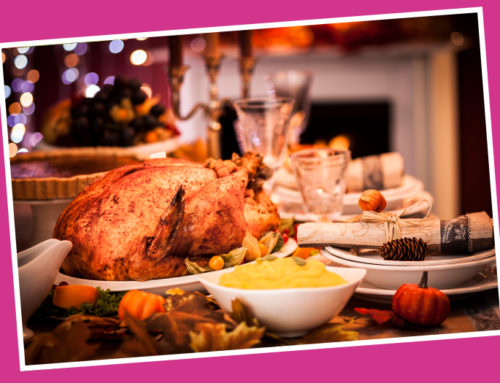Cooking the perfect Christmas turkey is a time-consuming operation. But when done well, it’ll be the finest tasting meat you’ll eat all year. Follow our simple guide to ensure you achieve perfection…
Preparing to cook
If you have a frozen turkey, make sure it is fully defrosted before cooking. If you’re cooking the turkey on Christmas Day, take it out of the fridge on Christmas Eve. It should be at a cool room temperature before roasting, otherwise cooking times are affected.
Stuffing
Always ensure your stuffing is cold before filling the neck cavity of the turkey. Stuff loosely to allow for expansion while cooking. A nice alternative to stuffing the cavity is to pop in a halved onion, a halved lemon and a handful of fresh herbs. This infuses the turkey with a subtle flavour that will enhance not only the taste of the bird but the gravy as well.
Calculate the roasting time
Ask your butcher to give you the oven-ready weight of your turkey, or go by the weight on the packaging. Remember to add the weight of your stuffing to the weight of the bird, and follow the approximate roasting and serving time guide below…
4-5 kg: 3 hours at 200C/400F/gas mark 6. Start cooking at 9, 10 or 11am to eat at 1, 2 or 3pm.
5-6 kg: 3-4 hours at 200C/400F/gas mark 6. Start cooking at 9, 10 or 11am to eat at 1:30, 2:30 or 3.30pm.
6-7 kg: 30 minutes at 200C/400F/gas mark 6, then 3-4 hours at 180C/350F/gas mark 4. Start cooking at 8, 9 or 10am to eat at 1:30, 2:30 or 3:30pm.
8-9 kg: 30 minutes at 200C/400F/gas mark 6, then 4-5 hours at 180C/350F/gas mark 4. Start cooking at 7, 8 or 9am to eat at 1:30, 2:30 or 3:30pm.
Prepare the turkey
Before roasting, place the turkey in a roasting tin, rub with butter or olive oil, season with salt and pepper and cover loosely with foil. This still allows it to go brown but stops the breast drying out. Make sure your oven is at full temperature when you first put the turkey in. For larger birds, it’s best to start the roasting at a moderately high temperature, then turn it down for the remainder of the time.
Basting
Let the turkey cook for just over half its roasting time, then baste with the juices using a baster or large spoon. Then do this every 20 minutes or so, increasing the intervals to 10 minutes for the final half hour of cooking.
Check it’s done
As the last few minutes of cooking time approach, insert a skewer into the thickest part of the thigh to see if it’s cooked right through. The juices should run clear with no sign of pink. If you’re unsure, return the turkey to the oven for another 30 minutes. Never, under any circumstances, serve underdone turkey!
Resting
Once your turkey is cooked, cover it with foil, keep it in a warm place and let it rest for at least 30 minutes or longer. This gives you time to finish roasting the vegetables in the oven and any other last-minute jobs. Finally strain the juices and add to your gravy for an added meaty flavour!
That’s it! You’re now ready to carve and serve your turkey… and receive the chef’s compliments!
Have you ever had a turkey cooking disaster? A ruined Christmas dinner? Let us know on our Facebook page!






